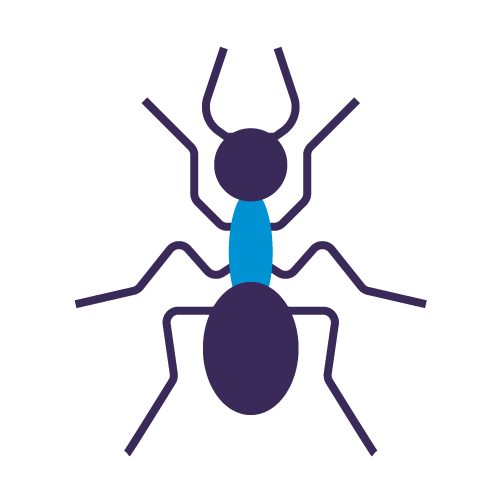
Welcome to the Bright Idea Zone!One toy, many ways to play
Discover a multitude of bright ideas for each placemat and keep the fun fresh. Designed by educational experts and sorted by age and ability, these activities help keep little minds engaged and growing.
For offline play, click to download the printer-friendly version of this page, as well as your bonus printable tools, and begin your learning adventure today!

Sorry to BUG you, but we can’t wait to show you all the fun packed in below and all over your mat! As you scurry through it, please note we’ve arranged it by parts of the placemat. Whether at home or in the classroom, we KITE wait to see what you think! All right, enough with the word play, D&J, let’s get to it!

Leaf It to Ladybugs to Teach You Math:
- Count the spots: Place a corresponding D&J 123 Find & Fit puzzle piece(s) on top of the ladybug. Alternatively, you can use your D&J number printables, post-it notes or playing cards. Older children can write the number (or the number word) on top of the post-it to practice writing (or spelling). Children can also write the corresponding tally mark on a post-it note to match.
- Count and show How many spots does this ladybug have? Can you find that number on the number line? Can you show me that number using the ten frame (for numbers 10 and under).
- Number sentences: Write a number sentence for each ladybug based upon the dots’ division on the shell with the line. For example, 4+3=7 or 7-3=4. Children can expand upon this activity by making up their own examples of other number composition sentences (eg. 5+2=7, or 20-13=7)
- Estimation: Do you think this ladybug has more or less than 5 spots? Alternatively, how many spots do you think this ladybug has?
- Comparison: Which ladybug do you think has more spots? How many more?
- One/Two more or less: How many spots are on this ladybug? Can you point to that number on the number line? How many spots would this ladybug have if two of its spots disappeared? Let's use the number line to find out.
- Domino Match: Sort the dominos over the ladybugs based on the 1-12 spots on each domino.
- Addition: How many spots do these two lady bugs have together? Use the number line to add the numbers together.
- Making 10 or 20. Match the ladybugs with a puzzle, post-it or printable that will bring the total number to 10 (or 15 or 20…)
Skip counting by 2: Count the number of eyes to demonstrate skip counting “Let’s count how many lady bug eyes we can find! 2,4,6,8…”

The Ants Go Marching…To Math!
- The ants are arranged in a different way (straight line or a circle vs the randomized spots) which allows children to practice in different ways.
- Many of the same learning opportunities exist for the ants as well as the ladybugs (count and show on ten frame, estimation, comparison…) allowing you to mix things up a bit!
- Let’s match! Point to the ant arrangement with the same number as the ladybug with spots.

Get In Line, Please! The Number Line
- Have your child count while touching each number…both up and down.
- Ask your child to count up to 12 (or any number) starting at a number other than 1. “Start at 4 and count up to 9.” (children can reference the number line if needed).
- One (or two) more or less: Ask the child to point to a number on the line. Alternatively, you can point to a group of bugs and have them identify that on the number line. Ask them to show you one more or one less on the number line.
- Odd and Even: Identify the odd and even numbers on the number line. When talking about a specific number, using a snack or D&J bingo chips, illustrate how that number can be divided in two parts (evenly or otherwise).

Mere Daisies To Understand Compare and Contrast
- Can you find a red/orange/yellow/green/blue flower?
- Pick two flowers. What is the same about these flowers? What is different about these flowers?
- Count the flowers: How many red flowers can you find?
- Tally or graph the total amount of each color. Compare your results. Which color has the most number of flowers? The least? How many more red flowers are there than orange flowers?
- Addition using the number line: Count the amount of red and green flowers and use the number line to help add the two numbers together to find out “how many red and green flowers are there?”